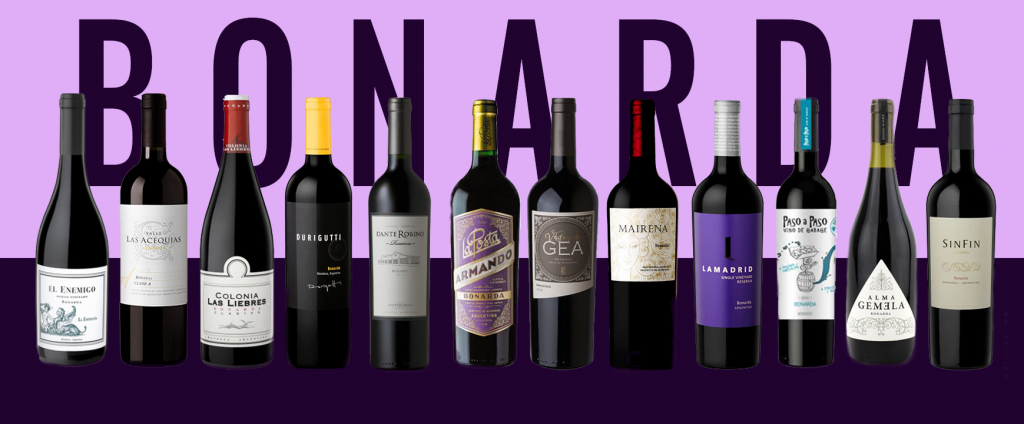
Bonarda is a low-key red grape from Argentina marked by its superb drinkability. If you are looking for an honest red wine with bountiful color, ripe and juicy fruit, and relatively low alcohol, bonarda could be your thing. It is not usually a very complex wine, but high-quality bonardas are proof of how much pleasure even a simple bottle of wine, when done well, can bring.
The identity of the bonarda varietal is not a simple one. The name “bonarda” involves several different grapes from Italy. For example, it is distinct from the historically significant bonarda Piemontese, and later proved identical to the almost extinct douce noir/corbeau (charbonneau) in Savoie and Jura.
Luckily, this grape’s success in Argentina as the country’s second most widely planted red has whittled down these complications to just bonarda (de Argentina), which is now very much an Argentine grape that suits everyday drinking but whose potential extends beyond that too. And while malbec might find it a little too warm in or out of Mendoza, the late-ripening bonarda can still produce excellent wines with good volume, making the life of growers a little easier.
For consumers, we are mostly acquainted with the bonardas with deep color (probably why the grape is also known as “corbeau”, “crow” in French) and a vibrant, floral, fruit-forward nose with the same fruity exuberance on the palate coated with smooth tannin and moderate alcohol. These are all testimonies of a grape that suits either a blend with a more monolithic malbec, or on its own, destined for a relaxed gathering with good food and hearty laughter.
At its best, especially from the older vines on elevated areas, bonarda tends to show a tad more tautness with serious depth and structure that tunes into its vivaceous, morello cherry and juicy, plummy fruit without having either taxing jamminess or the underripe herbaceous overtones. Think of barbera mixed with a textured gamay/Beaujolais. A smart oak regime can be applied to these more ambitious versions, adding a layer of complexity that bonarda on its own might not achieve.
The following list provides a chance to rediscover this hidden-gem variety at a price point around $15. Also, bear in mind that pure label bonardas are still relatively niche in most wine markets outside Argentina, so finding specific wines may be difficult, but if you can, try to see if these bottles are available.
– Zekun Shuai, associate editor in Beijing
12 great value bonarda wines
El Enemigo Bonarda Mendoza Single Vineyard La Esperanza 2017 – JS94
International Price: $15
Bodega Luis Segundo Correas Bonarda Mendoza Valle Las Acequias 2016 – JS93
International Price: $13
Colonia Las Liebres Bonarda Mendoza Clasica 2019 – JS92
Available at Vivino: $9.99
Available at Wine.com: $10.99
Durigutti Family Winemakers Bonarda Mendoza 2017 – JS92
Available at Wine.com: $16.99
Bodega Dante Robino Bonarda Mendoza Reserva 2018 – JS92
International Price: $14.99
La Posta Bonarda Mendoza Armando 2017 – JS91
Available at Vivino: $11.99
Vastago De Gea Bonarda Mendoza 2016 – JS91
Argentine Price: $8
Mairena Bonarda Mendoza 2017 – JS91
International Price: $13
Lamadrid Bonarda Agrelo Luján de Cuyo Single Vineyard Reserva 2017 – JS91
International Price: $16
Paso a Paso Bonarda Valle de Uco Vino de Garage 2019 – JS90
Argentine Price: $7
Alma Gemela Bonarda Mendoza 2019 – JS90
Argentine Price: $8
Sin Fin Bonarda Mendoza Guardo 2017 – JS90
Argentine Price: $8

